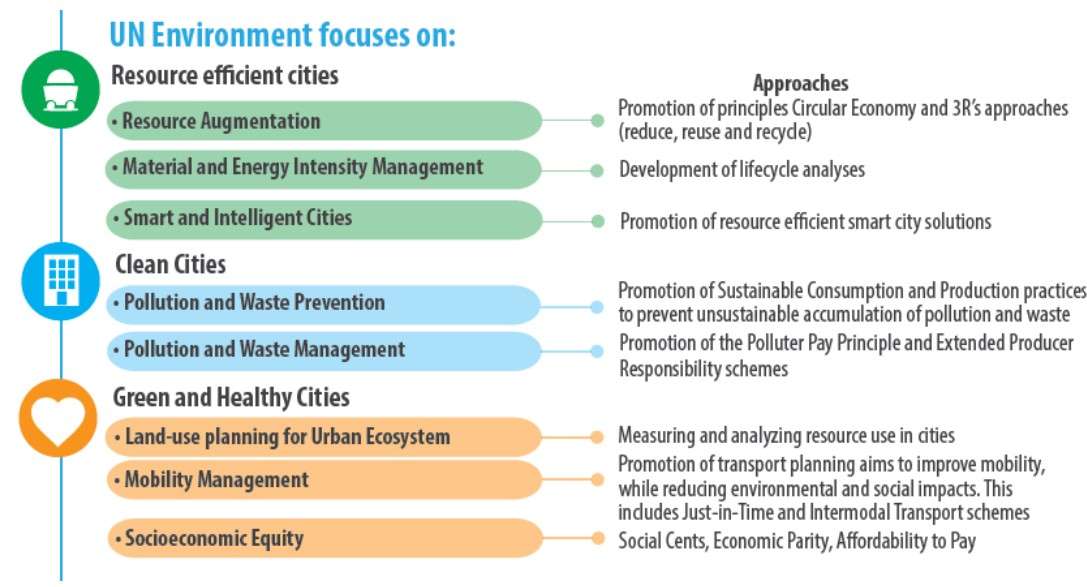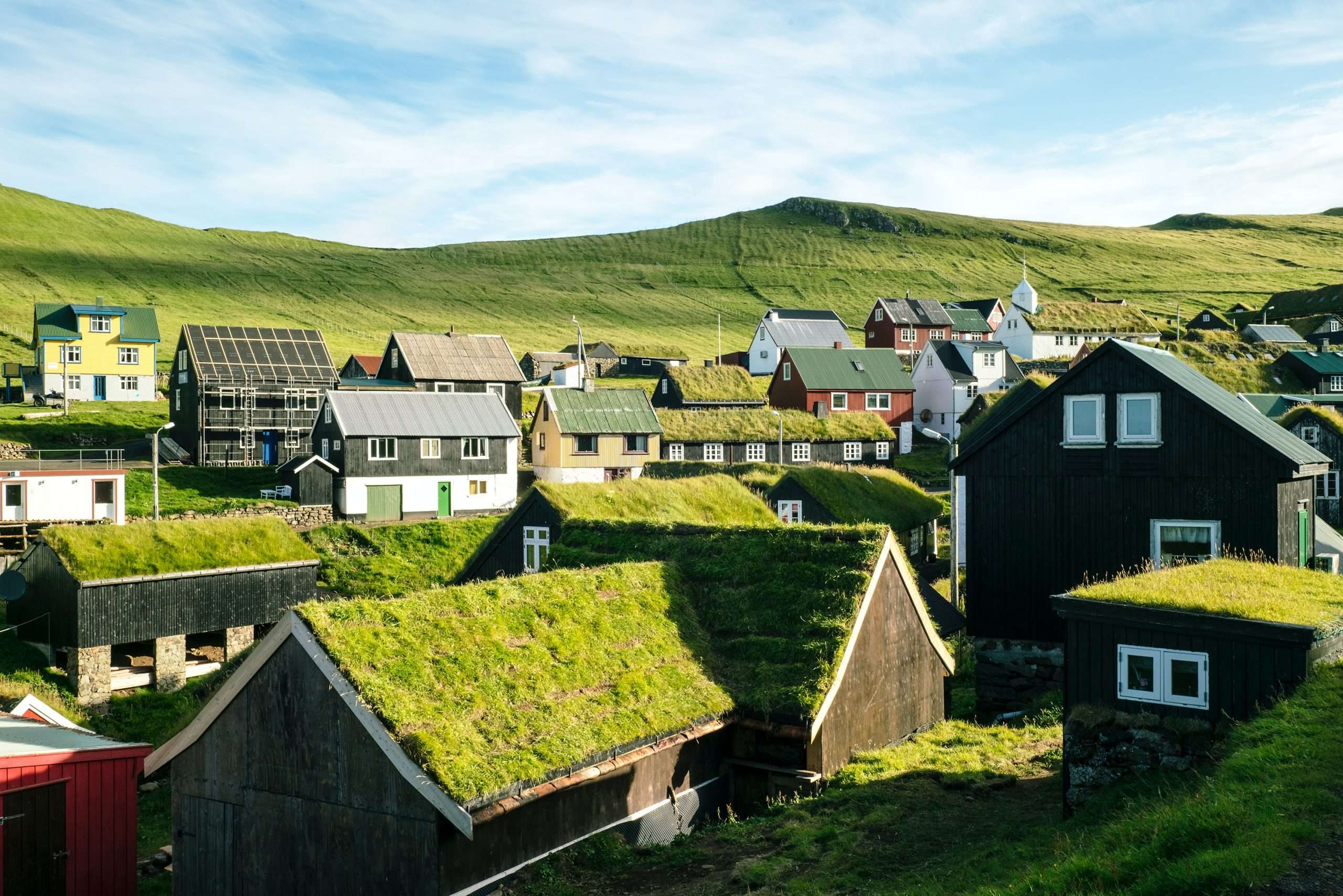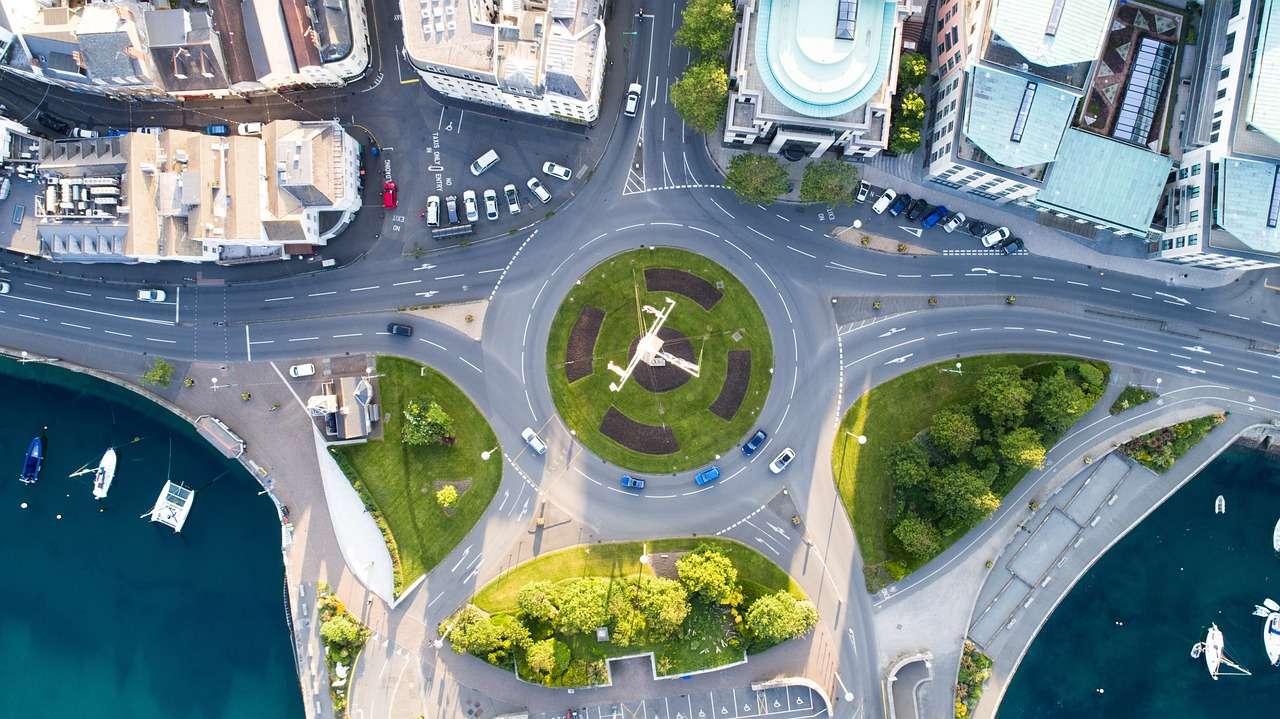In an era defined by increasing urbanisation and environmental concerns, pursuing green growth in cities is more important than ever. Today, some 56% of the world’s population lives in cities. This number is expected to grow by 1.5 times by 2045 (World Bank, 2023). Cities are responsible for consuming a staggering 75% of global energy and over 70% of greenhouse gas emissions (HydroPoint, 2022). This explosive urban growth has resulted in many negative consequences. Communities are suffering from increased traffic congestion, failing infrastructure, pollution and rising costs. As a result, the concept of creating green cities has gained significant prominence.
What are Green cities?
A green city is characterised by its commitment to environmental sustainability, energy efficiency, and the preservation of natural resources, while simultaneously promoting economic growth and prosperity. This holistic approach to urban development offers a plethora of economic benefits, ranging from job creation and enhanced property values to reduced healthcare costs and increased tourism. Cities generate over 80% of gross domestic product in many countries in Asia and the Pacific (UNEP, 2023). It is important we grow our cities in a sustainable manner as engines of economic growth that can lift millions from poverty.
Creating green cities
The United Nations Environment Programme (UNEP) approach focuses on resource efficiency, pollution and waste management, and land-use planning and management.

Source: UNEP
UNEP is focusing on Asia and the Pacific to promote sustainable consumption and production practices. Since 80% of its GDP comes from urban areas, the sustainability of Asian and Pacific cities will determine the region’s long-term productivity and overall stability. These cities suffer from a lack of basic services such as clean water, energy and transport. A lack of financial capital hampers economic growth and impedes inclusive development, trapping the poor in slums. Today, approximately 700 million people live in urban slums (UNEP, 2023).
Steps taken in Creating green cities
- Preserving Natural Spaces: The planning of cities should incorporate green spaces that are large, comfortable and integrated into the city. This allows for cleaner air, clean water and reduced levels of pollution. What’s more, something as simple as shade from trees can be extremely beneficial. Shaded areas can be 20 to 45 degrees cooler than unshaded ones. This can also reduce air conditioning—itself a major cause of climate change—by 20 to 30% (Anderson, 2021).
- Advocating For a Local Economy Culture: Locally produced goods and services should be encouraged. This allows for job creation and more sustainable supply chains. An example of this is urban farming. Urban farming produces food on small farms within cities, such as vertical farms and community gardens. This reduces carbon emissions from food production, giving residents more affordable, nutritious options. Easy access reduces greenhouse gas emissions from transport (HydroPoint, 2022).
- Renewable Energy Usage: Investing in the production capacity of renewables (solar, wind, geothermal) and promoting its use to businesses and individuals. In addition, promoting and providing incentives for electric vehicles will support the reduction in greenhouse gas emissions.
- Environmentally- Friendly Infrastructure: Invest in new technological improvements such as green concrete, recycled plastics, and renewably harvested wood (Anderson, 2021).
- Water Conservation: As water is a precious resource, it is important that water use is as efficient as possible. Green cities implement rainwater harvesting, water-saving incentives, and smart irrigation systems as water-saving methods.
- Promoting Environmentally Conscious Actions: A sustainable city can only be created and maintained if its inhabitants are conscious of their actions and committed to the cause. Citizens need to swap their old habits for new ones which are environmentally friendly and socially conscious (Meep, 2022).

Source: Unsplash
Funding green cities
One of the major challenges in developing green urbanisation is the funds required to do so. The right policies need to be implemented in order to equitably raise sufficient revenue to fund green growth. For example, well-designed property taxes and development fees can assist in raising enough funds for green infrastructure. In addition, the private sector can be called upon to fill in the funding gap through loans, bonds and carbon finance (OECD Publishing, 2013). An example of a green city paving the way for climate change and sustainable living is the Sustainable City in Dubai. They are willing to challenge conventional paradigms and operationalise a net-zero city in their pledge to the Paris Agreement goal of limiting global warming to 2°C.
Why Is It Essential That We Focus On Creating Green Cities?
Creating green cities brings about multifaceted economic advantages and has the potential to revolutionise urban landscapes and foster long-term prosperity.
Job Creation and Economic Growth
Green cities serve as incubators for innovation, fostering a robust environment for sustainable industries and technologies to flourish. As these cities prioritise renewable energy sources, waste reduction, and efficient transportation systems, they generate a demand for skilled workers across various sectors. One of the biggest challenges in the current era is acquiring smart talent (Kennan & Busch, 2016). Walkable green streets, safety and clean air attract young talent to these cities (Environmental Protection Agency, 2023).
The renewable energy industry alone is a prime example of the potential for job creation in green cities, providing employment opportunities in fields such as solar panel installation, wind turbine maintenance, and green building construction. According to the World Resources Institute, a dollar-for-dollar comparison can be made between green investments and fossil fuels:
- Investing in solar photovoltaic energy creates an average of 1.5 times as many jobs as investing the same dollar value in fossil fuels.
- Ecosystem restoration creates 3.7 times as many jobs as oil and gas production per dollar.
- Building efficiency retrofits create 2.8 times as many jobs as fossil fuels per dollar.
- Public transport creates 1.4 times as many jobs as road construction per dollar.
Furthermore, green cities attract investments from both private and public sectors, spurring economic growth (Scholz & Fink, 2022). A recent study of 185 Chinese cities, proves that both air and water quality affect the inflow of Foreign Direct Investments (FDIs). The study found that, a significant improvement in air quality in a city like Shanghai may lead to up to a USD one billion increase in FDI inflows yearly (Pisani et al., 2019). This influx of businesses and investments contributes to the local economy, creating a cycle of growth that can lead to a more sustainable and resilient urban community.
Increased Property Prices and Enhanced Real Estate Value
One of the most tangible economic benefits of creating green cities is the enhancement of property values. Green infrastructure, such as parks, green spaces, and energy-efficient buildings, has been shown to increase the appeal of neighbourhoods, boosting real estate prices. Residents are willing to pay a premium for access to well-maintained parks and recreational areas, as they provide a higher quality of life (Chen et al., 2022).
Furthermore, green building practices, which focus on energy efficiency and sustainable materials, often result in lower utility costs for occupants. Over time, these savings can significantly outweigh the initial costs of implementing green technologies (Aroul and Rodriguez, 2017). This makes green buildings more attractive to potential buyers or tenants.
Unfortunately, cities are facing challenges in this process. Marginalised groups such as informal settlers and informal traders are being pushed out with increasing housing and commercial rents (Scholz and Fink, 2022). The exclusion of this group of people is unfair. Thus, alternative options for them must be considered in policy making.
Healthcare Cost Reduction
Green cities promote cleaner air and water, resulting in improved public health and reduced healthcare costs. By prioritising green spaces and sustainable transportation options like cycling and walking paths, cities can encourage physical activity, thereby reducing the prevalence of sedentary lifestyles and associated health issues.
The presence of trees and greenery also mitigates air pollution, leading to lower rates of respiratory diseases and related healthcare expenditures. Noncommunicable diseases – many of them environment-related – now account for around 8.5 million deaths in the Southeast Asian region every year (Singh, 2017). By developing these rapidly urbanising cities in a sustainable manner, governments can mitigate the impact of poor public health. A healthy workforce can be pivotal in advancing these developing countries into robust and resilient economies.

Source: World Health Organization
Further, green spaces can enhance mental well-being. There is substantial proof that physical activity helps to overcome mild depression and reduce physiological stress indicators (World Health Organization, 2021). Additionally, green cities address the heat island effect, a phenomenon where heat is trapped on lower levels due to human activity and a lack of vegetation (Solecki et al., 2011). Urban areas are much more prone to this effect than their neighbouring rural areas. This effect increases energy consumption, air pollution levels and heat-related illnesses.
By planting more trees that provide shade and transpire more water, we can drastically reduce temperatures (Razzaghmanesh et al., 2021). Installing green roofs is another way to reduce urban temperatures. A green roof is an engineered system in which vegetation growing in a medium (soil) is planted over a waterproofing membrane, covering the roof of a structure. According to the General Services Administration, green roofs can reduce heat flux from roof to building by up to 72% (GSA, 2023).
Tourism and Cultural Attraction
Green cities have the potential to become major tourist attractions, drawing visitors with their commitment to sustainability and unique green infrastructure (World Tourism Organisation, 2023). Parks, botanical gardens, and natural reserves can serve as recreational spaces for both residents and tourists. This fosters a sense of community, providing opportunities for outdoor leisure activities.
Moreover, cities that prioritise green initiatives often gain a reputation as cultural hubs, hosting eco-friendly events, festivals, and exhibitions. This not only attracts visitors but also encourages local spending on hospitality services, restaurants, and entertainment venues. Over time, the influx of tourists and cultural activities can contribute significantly to the local economy, creating a ripple effect that benefits various sectors (Yin, 2016).
Resilience to Climate Change and Cost Savings
Cities face significant impacts from climate change, which has serious implications for human health and livelihoods. This is especially prominent for the urban poor (The World Bank Group, 2011). Extreme weather events, flooding and hotter temperatures impact economies and cause public health concerns. Climate change is only making situations worse.
Green cities are better equipped to face the challenges posed by climate change, safeguarding their economies from potential shocks. By implementing climate adaptation strategies such as flood-resistant infrastructure, drought-tolerant landscaping, and efficient stormwater management systems, these cities can minimise the economic losses caused by extreme weather events.
For example, if there is sufficient vegetation on the ground, some green surfaces have a significant sponge effect. This eliminates the need for water drainage (Urban Green-Blue Grids, 2023). This reduces the risk of flooding and can save cities from expensive weather-related damage. Further, green surfaces and green banks help keep the water clean and contribute towards recreation and biodiversity.
Urban planning in green cities can reduce congestion with better mass transport systems. Additionally, discourage informal settlements which are more prone to damage by natural disasters (The World Bank Group, 2011).
Furthermore, green cities often experience cost savings in the long run. Investments in energy-efficient technologies and renewable energy sources lead to reduced energy consumption, translating to lower utility bills for residents, businesses, and municipal operations (Govindarajulu, 2014). This frees up funds, redirecting them toward other essential services, further contributing to economic stability and growth.

Source: Pixabay
moving forward
The economic benefits of green cities are vast and interconnected, creating a cycle of prosperity that enriches communities, stimulates innovation, and protects the environment. Additionally, cities are facing many challenges on their journey toward sustainable urban development. According to a survey carried out by the London School of Economics (LSE), 74% of cities are willing to invest in new green technology to spur change, but almost two-thirds of these cities are constrained by budgets (Rode et al, 2013). Transitioning to green infrastructure and sustainable technologies often requires significant upfront investments. Developing green spaces, installing renewable energy systems, and retrofitting buildings can be cost-intensive, which can deter some municipalities with limited budgets.
Implementing green city initiatives often requires changes in behaviour by individuals, businesses and politicians. Successful implementation requires public support and involvement. Addressing concerns and incorporating diverse perspectives can be time-consuming and challenging, especially in cases where there is resistance to change. Furthermore, outdated regulations and policies might hinder the implementation of green city strategies. Studies show that national policy frameworks fall short of providing full support to the city’s green agenda for 51% of cities – particularly in North America and Europe (Rode et al, 2013).
Many citizens, policymakers, and urban planners might not fully understand the benefits and methodologies of green cities. However, over the long term, the economic benefits of green cities far outweigh the initial costs. As the world grapples with the challenges of urbanisation and environmental degradation, embracing the principles of green cities offers a promising pathway to a more prosperous and resilient future.
achieving the United Nations Sustainable Development Goals (SDGs) and how they link to Creating Green Cities
Creating green cities provides an all-round solution to achieving many of the UN SDGs. Green cities contribute to SDG3 by improving public health through cleaner air and water, reduced pollution, and increased physical and mental well-being. Green cities address SDG6 by implementing sustainable water management practices. Through strategies like green roofs and efficient stormwater systems, they mitigate flood risks and enhance water availability for both residents and ecosystems.
Green cities align with SDG7 by promoting renewable energy sources and energy efficiency. Clean energy technologies in infrastructure reduce greenhouse gas emissions and provide affordable, sustainable energy options to residents and businesses.
SDG 11 is directly related to the concept of green cities. By prioritising green spaces, sustainable transportation, and energy-efficient buildings, green cities create inclusive, safe, and resilient urban environments. They improve living conditions, enhance cultural attraction, and promote community engagement.
Green cities are at the forefront of SDG13 by combating climate change and enhancing resilience. They implement climate adaptation strategies, reduce greenhouse gas emissions, and mitigate the heat island effect. These efforts contribute to global climate goals and help cities become more resilient to the impacts of climate change.
A Thrivable Framework
The benefits of creating green cities have never been so clear. Through job creation, increased FDIs and enhanced real estate value, green cities promote economic growth. With reduced healthcare and energy costs, communities can benefit over the long term. In addition, a physically and mentally healthy workforce boosts economic prosperity and creates a strong sustainable culture. Further, with tourism attraction, and climate resilience, green cities present a compelling case for sustainable urban development.
The THRIVE Framework examines issues and evaluates potential solutions that can support sustainable transformations of urban cities. The THRIVE platform is scale-linked, values-based, context-based, and science-based, informed by the natural sciences. We, at THRIVE Project provide research, education and advocacy to create a sustainable future, going beyond, teaching humanity how to thrive in harmony with all living matter.
Register for our Thrivability Matters Webinar Series where we address the challenges of urbanisation and how we can build sustainable cities. In order to stay updated with all of THRIVE’s sustainability initiatives, sign up for our newsletter so you won’t miss out!























